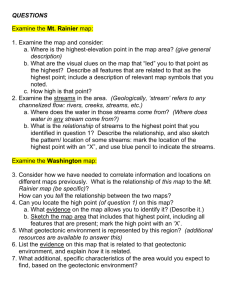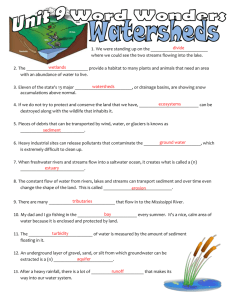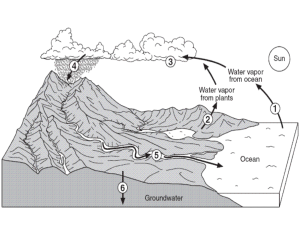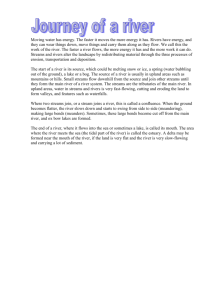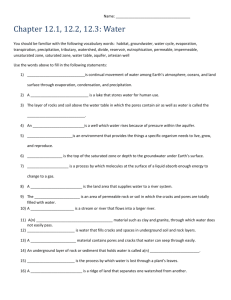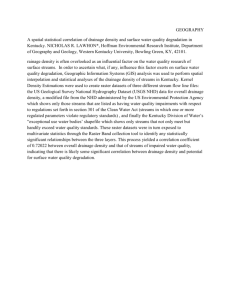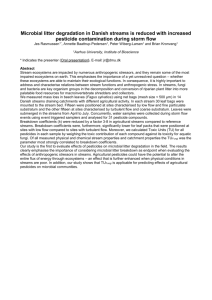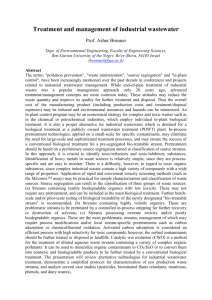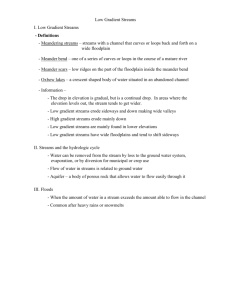Northeast Water on the Web Workshop
advertisement
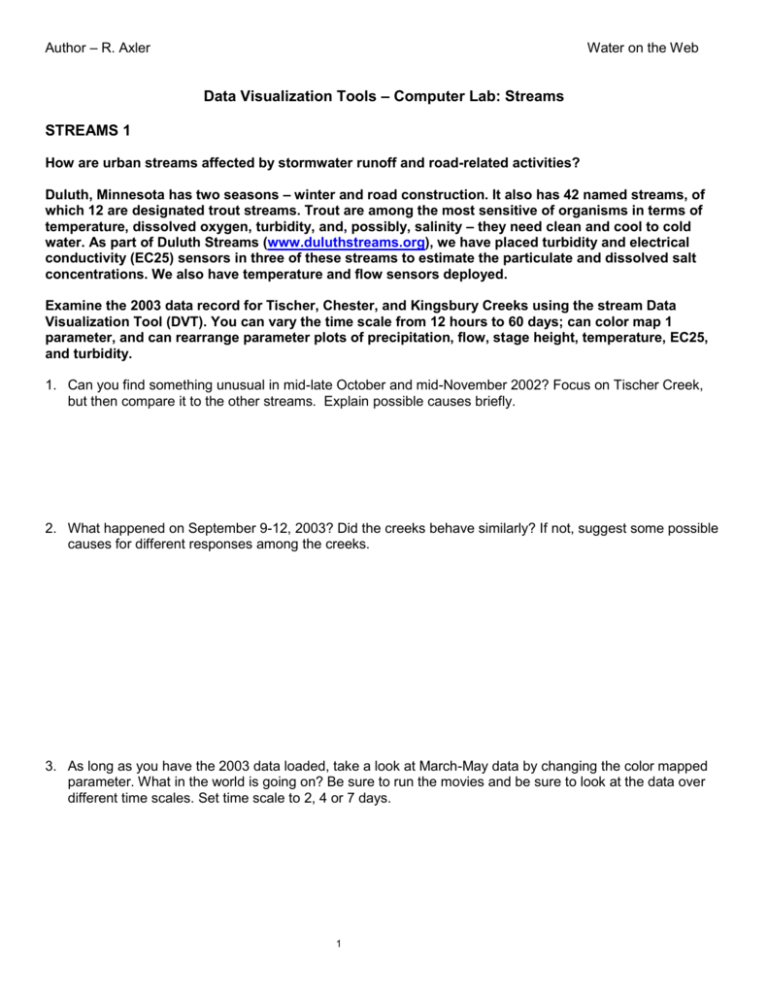
Author – R. Axler Water on the Web Data Visualization Tools – Computer Lab: Streams STREAMS 1 How are urban streams affected by stormwater runoff and road-related activities? Duluth, Minnesota has two seasons – winter and road construction. It also has 42 named streams, of which 12 are designated trout streams. Trout are among the most sensitive of organisms in terms of temperature, dissolved oxygen, turbidity, and, possibly, salinity – they need clean and cool to cold water. As part of Duluth Streams (www.duluthstreams.org), we have placed turbidity and electrical conductivity (EC25) sensors in three of these streams to estimate the particulate and dissolved salt concentrations. We also have temperature and flow sensors deployed. Examine the 2003 data record for Tischer, Chester, and Kingsbury Creeks using the stream Data Visualization Tool (DVT). You can vary the time scale from 12 hours to 60 days; can color map 1 parameter, and can rearrange parameter plots of precipitation, flow, stage height, temperature, EC25, and turbidity. 1. Can you find something unusual in mid-late October and mid-November 2002? Focus on Tischer Creek, but then compare it to the other streams. Explain possible causes briefly. 2. What happened on September 9-12, 2003? Did the creeks behave similarly? If not, suggest some possible causes for different responses among the creeks. 3. As long as you have the 2003 data loaded, take a look at March-May data by changing the color mapped parameter. What in the world is going on? Be sure to run the movies and be sure to look at the data over different time scales. Set time scale to 2, 4 or 7 days. 1 Author – R. Axler Water on the Web STREAMS 2 What is the solubility of hog and people poop in water? How is stream water quality affected by hydrologic events and land use activities? The Cape Fear River is a large river that drains a large chunk of southeastern North Carolina, flowing through Wilmington (literally on occasion) before it discharges into the Atlantic Ocean. There is a large variety of land use and water quality issues in its watershed, including human wastes, animal wastes, agricultural runoff, and urban stormwater runoff. There is also a nice set of monthly data from 19952002 for all the major conventional water quality parameters at about 15 different river stations. These data are on the Web along with annual interpretive reports. The WOW and River Run projects collaborated to make it possible to animate and view these data via a data visualization tool called “River Run.” You can Asit@ at a site and view a time series or you can pick a date and watch the water quality change as it moves downstream. 1. Examine the record for the station at NAVASSA. This is a site about halfway between the coast and the most upstream station in the series. Vary the number of dates in the plot from its default value to the maximum 85 to examine the long-term record. Vary the color mapped parameter. What generalities can you make about the seasonality of its levels of: * salinity * nutrients * oxygen * fecal coliform bacteria * turbidity * flow 2. Take a closer look at August to September 1998 and June to September 1996. Summarize your observations. Bonnie made landfall on Aug 26, 1998 after the Aug sampling and Hurricanes Bertha & Fran in 1996 2 Author – R. Axler Water on the Web 3. Now switch the DVT to allow you to plot multiple sites on one date. Vary the dates from May to November, 1998. Change the color mapper as needed to better visualize the water quality changes occurring from the western-most upstream sites to the eastern coastal sites. Focus on the same 6 parameters from Question 1 above. What are the major changes occurring as the water moves downstream in September in contrast to May and November, 1998? 4. There won’t be time, but if there were, people could try to deduce where major sources of pollutant discharge occur along the river course. 3
